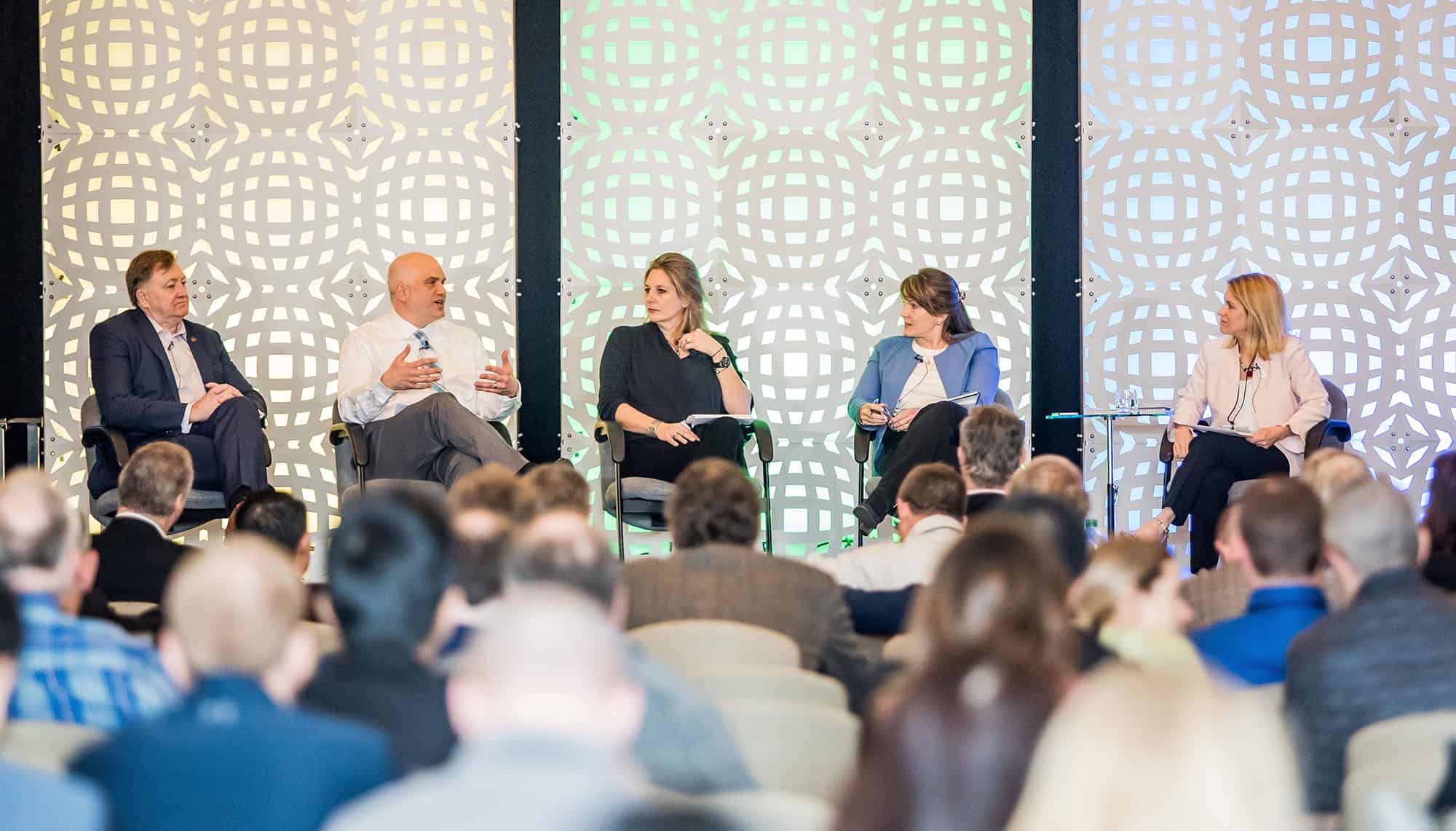
“Lighting isn’t just lighting anymore.”
That statement from Darlene Pope, Global Head of Smart Buildings and Digital Workplace at WeWork, was an overriding theme of the “Lighting and the Smart Building” panel at the DLC’s 2019 Annual Stakeholder Meeting in St. Louis.
Conference attendees learned that the number of smart buildings is projected to grow by 30 to 34 percent by 2024, with networked lighting controls (NLC) playing an important role in that increase. Meanwhile, Internet of Things (IoT) device shipments in North America are increasing by about 11 percent annually, said panelist Ron Zimmer, President and CEO of the Continental Automated Buildings Association (CABA), and lighting controls comprise one of the largest segments of that growth.
Listen to the full Lighting and the Smart Building panel audio, recorded at the 2019 DLC Stakeholder Meeting in St. Louis.
Arranged in regular patterns throughout a building and equipped with sensors designed to collect a variety of data, NLCs are hiding in plain sight as the gateway to more connected, smarter workplaces, health care facilities, schools and other buildings. Panelist Michael Skurla, Director of Digital Strategy for BitBox USA, noted that lighting is uniquely positioned to provide the infrastructure for a smart building, and contended that “it can and should do more.”
While a 2017 DLC study showed that adding NLCs to LED projects can boost energy savings by up to 47 percent, LumiFi Founder and Creative/Product Director Beatrice Witzgall, another DLC panelist, told the audience that “looking at just energy savings is limiting; it doesn’t unlock the smart building potential.” As Pope noted, with companies spending $300 per square foot on their employees versus $1 per square foot on energy, energy savings are no longer the main driver for corporations looking at lighting projects. This point is especially cogent considering recent research showing that giving buildings a “brain” can lead to happier building occupants, fewer complaints to facility managers, better work performance and staff retention rates, and lower absenteeism.
The importance of the data side of lighting “can’t be overstated,” Pope said. Panelists and conference participants discussed how NLCs allow communication with building managers and occupants and with other building systems to enable functions ranging from adjusting the temperature in individual employee work spaces, parking elevators on the most occupied floors, and navigating to available meeting rooms, to providing real-time data that lets first responders know where people are in case of an emergency.
Panelists concluded that lack of awareness and understanding is the biggest barrier to wider, quicker adoption of smart building-enabling NLC technology. Producing and disseminating case studies documenting the technology’s ROI was one recommendation for increasing adoption.
The DLC revises its NLC requirements annually to keep up with quickly evolving technology and standards. The second draft of the DLC’s V4.0 Networked Lighting Controls specification is currently out for stakeholder comment and expected to be finalized in June. V4.0 focuses on strengthening the value of NLC technology while addressing important issues for market acceptance such as cybersecurity, energy monitoring, and interoperability.
© 2025 DesignLights Consortium. The DesignLights Consortium is a project of Efficiency Forward, Inc., a non-profit 501(c)3 organization. Privacy Policy Terms of Use